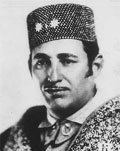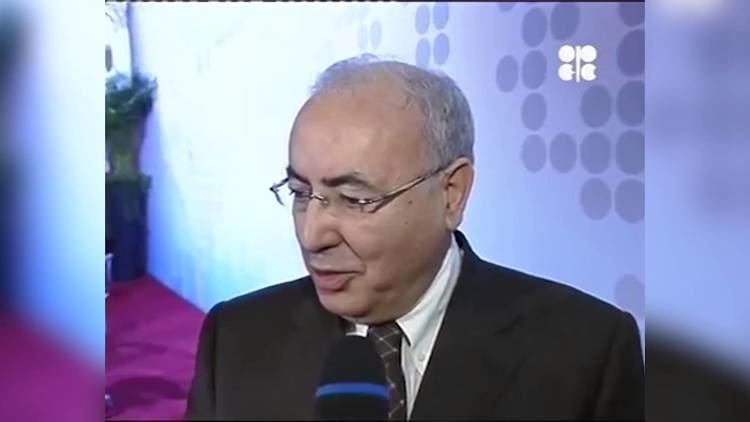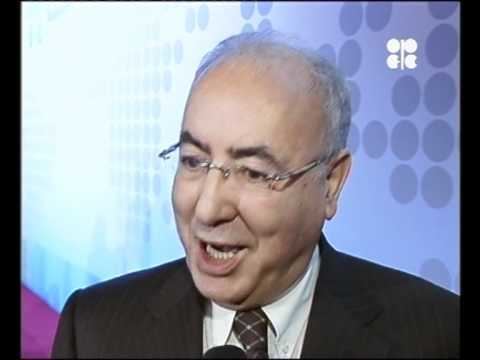Buried at Morocco Name Mohamed Meziane | Place of burial Morocco | |
 | ||
Full name Mohamed Belkacem Zahraoui Meziane Birth name Mohamed Belkacem Zahraoui Meziane Allegiance Kingdom of Spain 1913-1931 Spanish Republic 1931-1936 Francoist Spain 1936-1957 Kingdom of Morocco 1957-1975 Battles/wars Rif WarsSpanish Civil WarRif Rebellion (1958) Awards Grand Cross of Military MeritLaureate Cross of St FerdinandOrder of Cisneros Military Medal Suffering for the Motherland Nationality Spanish (birth - 1957)Moroccan (1957 - death) Similar People Jose Enrique Varela, Francisco Franco, Jose Moscardo Ituarte, Emilio Mola, Jose Miaja | ||
Affaire sonatrach 1 mohamed meziane sort de son silence
Mohammed Meziane or Mohamed ben Mizzian (Arabic: محمد أمزيان Full name: Mohamed Belkacem Zahraoui Meziane; 1 February 1897 – 1 May 1975), known by the Spaniards as Ben Mizzian, was a Moroccan general from Beni Ensar (near Nador). He was one of the sons of local Moroccan leader Mohammed Ameziane, also known in Spanish as El Mizzian, and was the only Moroccan to ever become a general in Spain.
Contents
- Affaire sonatrach 1 mohamed meziane sort de son silence
- Yamchi hal mohamed meziane
- In Spain
- The Civil War
- After the War
- Museum
- References

During the Spanish Civil War he commanded a section of the Regulares Indígenas troops, who formed the shock troops of the Nationalist Army. Their fierceness in combat made them highly feared among Spanish Republican Army ranks. After holding many high military posts in Francoist Spain Mizzian reached the rank of Lieutenant General of the Spanish Army. Summoned by King Mohammed V, in 1957 he moved to Morocco following the independence of the country. In 1970, he was made a Field marshal (mushir) and is the only person to have ever held that title in the Moroccan Army.

Yamchi hal mohamed meziane
In Spain
Formed at the Military Academy in Toledo, Spain, which he joined in 1913, he was patronized by King Alfonso XIII following his father's death. After graduating as a junior officer (Alférez) Mizzian served for a long period in the Spanish army of the Spanish Protectorate of Morocco. He took part in 1921 in the Rif Wars against Abdelkrim. In 1923 he became a Captain and in 1925 a commander of the Spanish Colonial Army. During this time he established a deep friendship with Francisco Franco and once he even saved his life.
The Civil War
At the time of the coup of July 1936 Mizzian was posted as commander of the II Tábor of Regulares 5, based at Segangan, about 20 km from Melilla. He promptly took the side of the rebel faction and in his first battle of the Spanish Civil War, he stormed the seaplane base of Atalayón in Melilla where the commanders had refused to join the rebellion. Even though the loyalist troops defending the post surrendered, the base commanders, Commander Virgilio Leret Rui and Second Lieutenants, Armando Gonzalez Corral and Luis Calvo Calavia, were nevertheless executed the following morning along with all the men of the garrison, their place of burial remaining unknown.
Mizzian then moved with his Regulares to the Peninsula, where he zealously implemented General Mola's policy of instilling terror in Republican ranks. After the battle for Navalcarnero American historian John T. Whitaker wrote that among the Spanish Republican prisoners were two young militia women that Mizzian personally interrogated, after which he handed them over to his men. When Whitaker expressed his concern about the fate of the girls he "attended horrified in helpless anger" when Meziane stated that the two teenage women "will not live more than four hours" once at the hands of his troops. After the Army of Africa commanded by Francisco Franco took over Toledo on 27 September 1936, Mizzian went with his troops to the military hospital and killed over 200 wounded Republican militia men in their beds, allegedly as a revenge for the Siege of the Alcazar. The proverbial cruelty and reckless behaviour of the Regulares troops were not random, but were part of a calculated plan of the Francoist military machine to allow these shock troops to spread fear among Republicans in order to demoralize them.
In Madrid Mizzian was wounded in the combats during the Battle of Ciudad Universitaria. After recovery he was promoted to Lieutenant Colonel and participated in the Siege of Oviedo at the head of the Galician column. Later in the Civil War, in 1938, he was promoted to Colonel and was named Commander of the First Navarra Division (1ª División de Navarra) of the Francoist army, at the head of which he took part in the Battle of the Ebro, breaking the deadlock of the battle at the Serra de Cavalls in October 1938, taking 19 fortified enemy positions, killing 1,500 republican troops and taking 1,000 prisoners. Shortly thereafter El Mizzian moved on with his troops to spearhead the Catalonia Offensive.
After the War
After the defeat of the Spanish Republic, Franco named Mizzian Commander General of Ceuta in the North African coast. In 1953 he was promoted to Lieutenant General and was sent to Galicia in NW Spain as Captain General of the VIII Military Region. In 1955 he was named Captain General of the Canary Islands in what would be his last post in the Spanish Armed Forces.
In 1956 Morocco became an independent nation and the king of the country, Mohammed V, called on Mizzian to take charge of the reorganization of the new Royal Moroccan Army. Mizzian formally asked then General Franco to be relieved from his duties in the Spanish Army and his request was duly granted on 22 March 1957.
In 1964 Mizzian was named Morocco's Minister of Defence, a post which he held for two years until 1966 when he returned to Spain after King Hassan II named him Ambassador 'as a gesture of goodwill towards the Spanish State'. He lived quietly at the Moroccan Embassy in Madrid until 1970 when he returned to Morocco having been named Minister of State and, in November the same year being promoted to the rank of Marshall. He held the post of Minister of State of the Moroccan government until March 1975 when he fell gravely ill and was flown to Madrid to be treated. He died at the Air Force Hospital in Madrid in May the same year and his remains were later flown back to Morocco for burial in his home country.
Museum
In 2006 a museum was opened in Rabat dedicated to Mohamed Meziane. It is located in a house near the British Embassy that had been given to him as a present by Franco. The museum project was an initiative from his daughter Leila. The architect who was in charge of the project is a well-known architect from Casablanca, Mohamed Lamnaouar.
